|
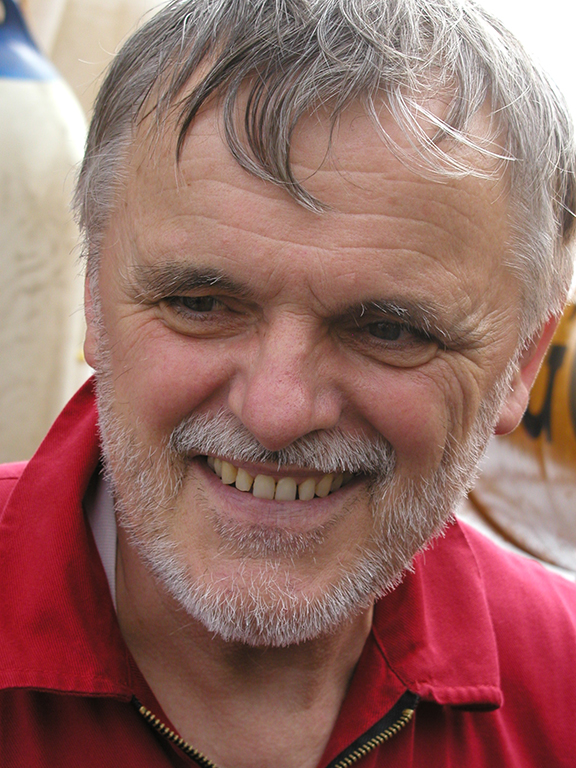
Dr. Hans Fricke, of the Max-Planck Institute: ethologist, filmmaker, and leader of the Jago Dive Team. Beginning in 1986-7 with the submersible "Geo," the Fricke team made the first films of coelacanths swimming at their natural depth. These films were followed by behavioral observations, biological studies, and population counts through November 2000. The team then dove off of Sodwana, South Africa, returning to the Comoros in 2008. Preliminary survey results indicated that the Comorian coelacanth population in 2008 was stable at about 500. Some of the same individuals have been observed in the same area for 20 years, while others were new. (Karen Hissmann) During late October, early November 2009, a Coelacanth Expedition at the Comoro islands headed by Dr Fricke, had to abandon juvenile search operatons due to nearby pirate attacks! The project did succeed in obtaining new HD images of adult coelacanths.
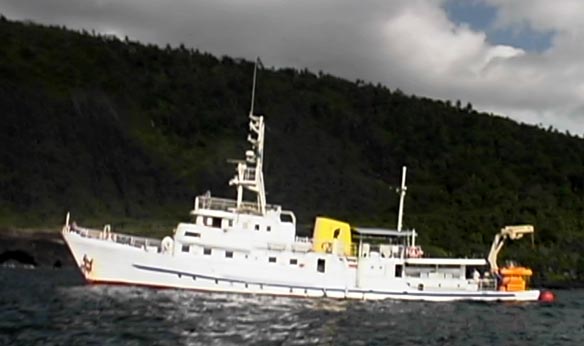
Research vessel, "Indian Ocean Explorer," with Jago submersible parked on the stern.
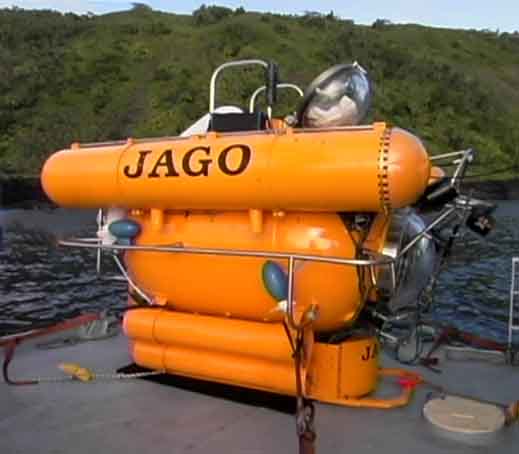
Jago submersible side view. Designed by Jurgen Schauer and Hans Fricke.
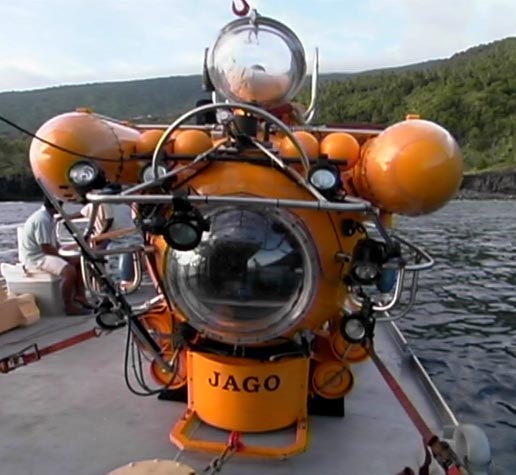
Jago submersible, front view, showing observation window, lights, and manipulator arm.

Left to right: Karen Hissmann and Jurgen Schauer. Karen is a biologist, author, and Jago Dive Team operations manager. In 1986-1987 Jurgen made the first films of living Coelacanths swimming at depth in their natural habitat off the Comoro Islands. In 1999, he made the first such films of the Indonesian Coelacanths.
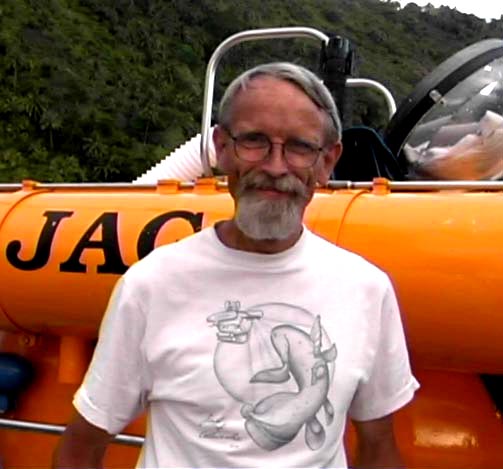
French marine biologist Dr. Raphael Plante joins the Jago dive team on all major Coelacanth research expeditions. His dream is a Coelacanth Marine Park in the Comoros. An area has been designated for this. |
Special Outlink: Some of the less dramatic Jago coelacanth pictures on the web site of the coelacanth association in Comoros (APG), which has been assisted by dinofish.com, the Jago dive team, and Frank Leskovitz. Opens in new window. Close window to return to dinofish.com Click here |
|||
|
|
|||

|

|
||